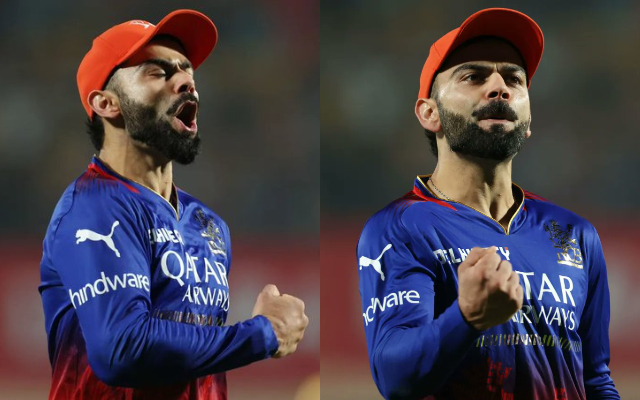
This was in 2018. India beat South Africa in their backyard in an ODI series for the first time. In one of those games, Virat Kohli gave Aiden Markram a mouthful after the latter got out. There was no aggression in the body language of the home team’s stand-in skipper. Head down and removing his gloves, he was on a sheepish walk back to the hut.
The India captain had joined the celebrations next to the pitch when Markram passed them. His arms resting on the shoulders of teammates in the huddle, Kohli turned his head towards the South African and again barked a few words. The exaggerated joy of vanquishing an opponent and its vigorous manifestation on his face ruled out mere jubilation. It looked as if Kohli was rubbing it in when his rival was down and out.
Kohli’s elaborate display of merriment, after Jack Fraser-McGurk was run out at the non-striker’s end off a deflection in Sunday’s IPL match, wasn’t as offensive directly. He didn’t seem to have anything for the ears of the batter either. But it was unusually furious, especially the length of the celebration, with the gestures and utterances leaving little for imagination. Mildly put, his mannerism reflected untamed verve associated with deeds of bigger proportions. Social media went acerbic in no time.
For the Latest Sports News: Click Here

Players have been reprimanded, docked a substantial part of their match fees, and faced bigger sanctions for misbehaving on the field. Kohli himself experienced some of it. But somehow, the shenanigans have not subsided. Not as frequent as they used to be, these outbursts keep surfacing. While many players are reprimanded for such acts — there have been a few instances in IPL 2024 itself — Kohli seems to go on undeterred.
Considering that Kohli doesn’t have a history of harboring animosities with opponents, his apparently vitriolic expressions are treated as a show of emotions from a super-charged athlete. He is always playing to win, and evident in his boisterous behavior is that uncompromising spirit. Kohli is not the first or last to indulge in these antics, and what he does is often interpreted as a natural consequence of success achieved under testing circumstances.
Kohli is not what he looks like or sometimes says. It made headlines a few years ago when, following some provocative statements and gestures from the visiting team during a series where tension ran high, he fumed that he would never be friends with the Australians again. The same India captain was seen asking Indian fans to stop jeering when Steve Smith came out to bat in a World Cup match at the Oval in 2019 after returning from suspension for his role in the Sandpaper Gate fiasco.

Kohli is a hyperactive cricketer, whose emotions are seen on his face. It’s a reflection of his commitment, intensity, and will to win. He cannot physiologically hide it. Change is not advisable because this is how he has expressed himself despite being pulled up by the match referee for behavior unbecoming of a captain in a Deodhar Trophy match in 2009 when he was just past 20. His passion, often visible explicitly, has a lot to do with his success and glory of the subsequent years.
The world has accepted that this is how he is. If you want those runs, you have to take them with the theatrics, even if they are ugly at times, like screaming absurdities into the stump microphone in South Africa a few years after that Markram incident.
But because nobody is above everything, it has to be asked where the line is. For all his brilliance, hunger, longevity, and unparalleled work ethics, Kohli can’t get away if he makes it look nasty. While it’s not his fault if match officials don’t find him guilty, as an ambassador and role model he has duties. All sports stars have. Not just conscience, sponsors want this too. It’s an inevitable offshoot of fame. In the absence of this realization, Kohli might remain the idol who parents would want their kids to follow only when it comes to playing. For conduct, they would rather look at someone else.




